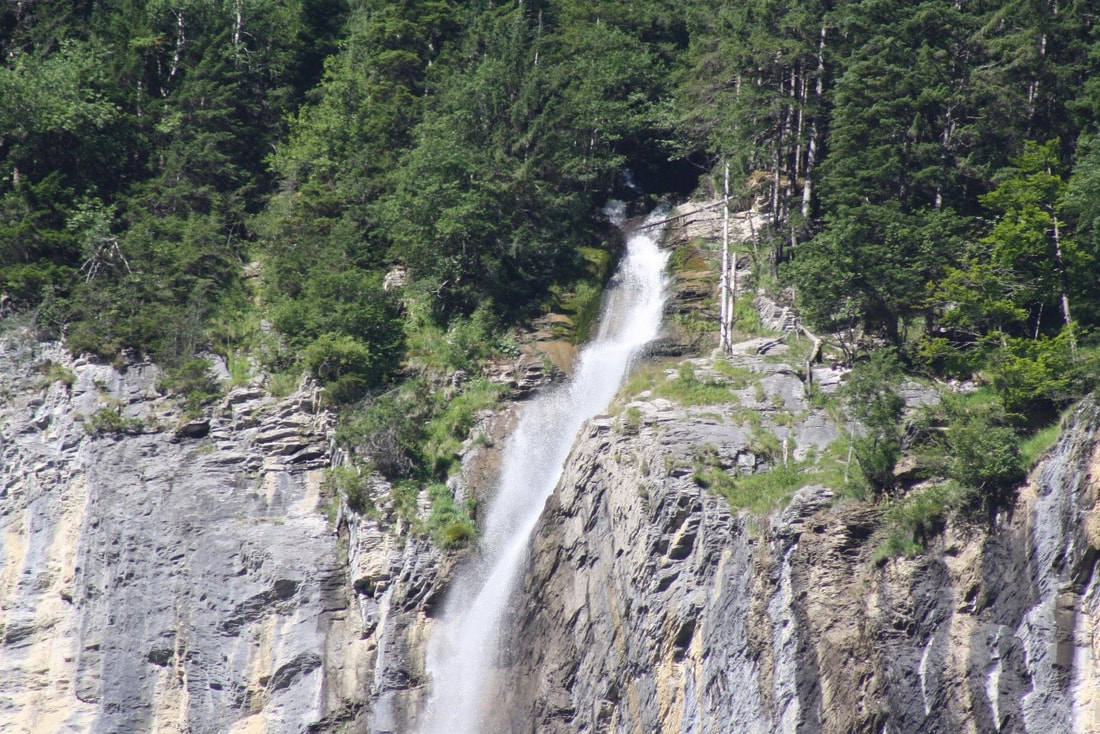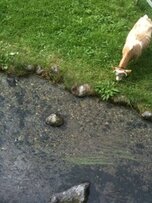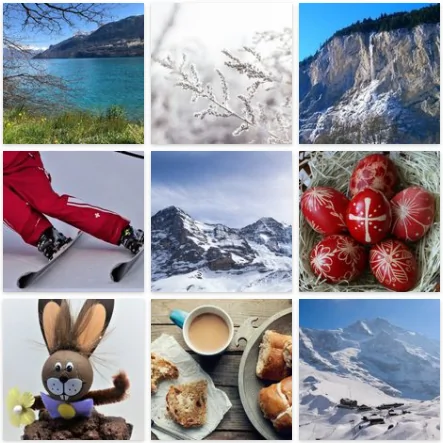|
Information about Skiing, Walking, Outdoor Adventure
 Photo taken from balcony of Staubbach bursting over the cliff edge into the Weisse Luetschine The name Luetschine derives from the Celtic name leucos or leuca , meaning "white" or "bright, shiny" and so for clarity it became the "Weisse Luetschine". Flowing 8.6 km through from the Stechelberg area through the Lauterbrunnen Valley to Zweilütschinen (two Lüuetschine). Here it joins the Schwarze Luetschine, or Black Luetschine that has flown 12.3km from Grindelwald. Folk tales say that the villagers of Lauterbrunnen never even washed so their could remain white. Made up of rain, snow melt and ice, each of which has its own footprint in the river water makeup, researchers can determine the origin of the waters from the to the catchment area of the shiny Weisse Luetschine (165 km2). Researchers also consider the influence from soil and geological features over which the waters flow and have found that snow melt dominates between April and July with an annual total of almost 40% of the run-off at that time. This glacier melt occurs mainly between July and September and reaches a quarter of the annual total outflow of the Weisse Luetschine. The researchers say that the rain component measured and isolated between May and October is striking and contributes a third of the waters for the Weisse Luetschine. (Source: Gabriel Peier, 20.12.2016 Hydrology Group, Bern University http://www.hydrologie.unibe.ch/projekte/poster/Poster_PEIER.pdf) Where is the source for this impetuous Weisse Luetschine ? From 72 and more waterfalls and streams flow over the massive magnificent walls surrounding the luminous Lauterbrunnen valley into the rushing, bustling Weisse Luetschine. From the Schilthorn side these include the Sefinenlutchine, Schiltbach and the mighty Muerrenbach Falls. The Staubbachfall also feeds into this gurgling busy river. From the south, high up are 5 or 6 contributing streams from the direction of the Mittaghorn, Grosshorn, Tschingelhorn, Gspaltenhron (the pyramid-like shape) and Breithorn (German for "broad horn". Breithorn is the huge conical shining mountain peaked with translucent ice at the southernmost part of the valley. The Breithorn (3,780 m) can often have the mystical pinkish aurora or optical phenomenon at sunset called Alpenglow. This massive straddles the Cantons of Bern and Vallis and is part of the border between Lauterbrunnental and the Loetschental valleys. This Breithorn is not to be mistaken for the other Breithorn near Blatten at 4,164 m and part of the Pennine Alps mountain range. At Stechelberg, the fervent torrents of the higher up Schmadibrunnen purge into a 60m cascade and force their way from the Breithom Glacier roaring downwards with a noise like thunder to the hydro station. Managing the power of these waters is a constant concern for the valley authorities as they move the rocks around and yet the majesty of these roaring pure waters have their own willfulness and draw attention, almost demanding to be watched. At the curved wooden bridge near the power station in Stechelberg one can be lured by several gushing, racy white waters, seemingly always is a hurry to become the impetuous waters of the Luetchine waters that come from the Sefinenlutchine and Schiltbach. Walking upward from Stechelberg towards Gimmelwald is enchanting to watch playful and forceful waters making rock sculptures on their way. The Spiessbach above Gimmelwald pours over a monstrous rocky outcrop under which one can stand and lookout through the curtain of water raging from overhead. A slippery but worthwhile side path from Gimmelwald to Muerren. Comments are closed.
|
Eyhus 5
Where dreams begin for outdoor adventures in the inspiring Jungfrau region Categories
All
Archives
July 2024
|
|
Eyhus 5,
3822 Lauterbrunnen, Schweiz Email: [email protected] About Us: We love the Jungfrau Region and enjoy helping guests to plan and discover the beauty here for themselves. Summer, Winter, Spring and Autumn each have their opportunities to give inspiration in this amazing Playground. |
|

 RSS Feed
RSS Feed

